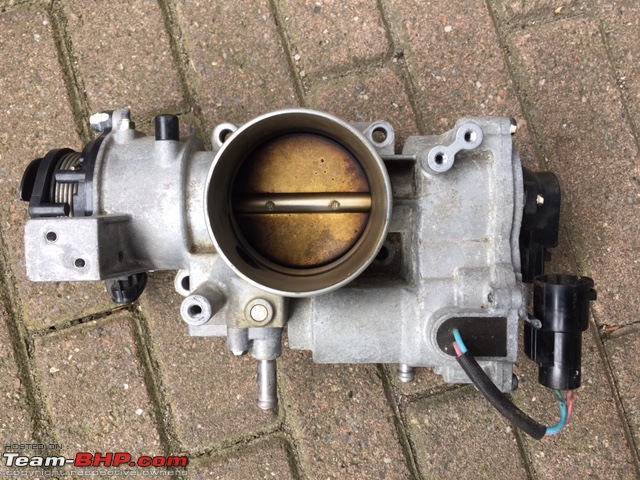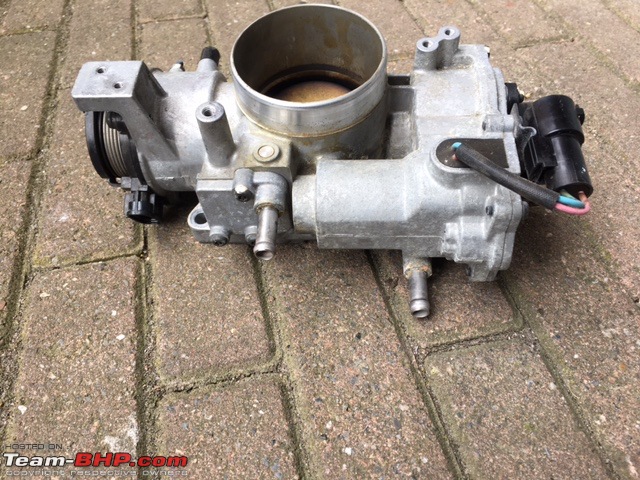Why do Diesel engines need throttle body and a throttle plate?
Short answer: Diesels do not need throttle body and throttle plate for its efficient operation.
Why?
Because Diesel engine is throttled by fuel not air like in a Petrol engine. Give more fuel in a Diesel engine and it turns faster with more torque, give less fuel it slows down. Maintaining stoichiometric ratio is not as important as in a Petrol engine to keep a Diesel engine running.
In a Petrol engine to make the engine turn faster the throttle plate is opened allowing more air into the engine and ECU/Carburetor feeds more fuel to maintain stoichiometric ratio for the given air supply.
Then why does some Diesel engines come equipped with a throttle body?
Yes some modern engines have throttle bodies and some do not. The primary reason for its presence is emissions control and Exhaust Gas Recirculation (EGR). The ECU by means of electrical motor or solenoid controlled vacuum line can control the actuation of the butterfly valve in the throttle body to restrict the amount of fresh air (from turbo charger) into the intake manifold under low engine load situations. This helps create a pressure differential and thus helps the EGR system to feed more exhaust into the intake manifold.
This is what Delphi has to say about their Diesel engine throttle bodies.
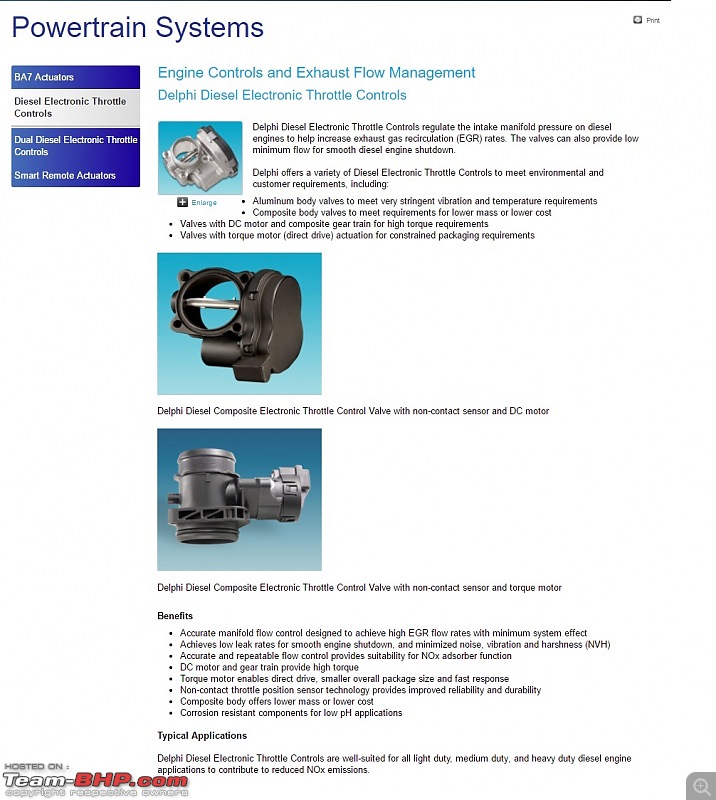
(Src:
http://www.delphi.com/manufacturers/...ottle-controls)
Main reason for having a throttle body on a Diesel is EGR and it also has a role to play during engine shutdown. When engine is turned off the valve closes and cuts air into the cylinders this helps to achieve a relatively smoother shut down. Throttle body works as an Anti-Shudder Valve (ASV).
Another reason people say a throttle body could be of some use is during an engine runaway situation by cutting off the air supply. But this would work only if the throttle body is in closed position
for as long as the key is OFF. In the Crysta the throttle body is spring loaded to be always open not closed so may not be effective in this type of a situation.
 Examples of Diesel engines with and without throttle body?
Examples of Diesel engines with and without throttle body?
With: Toyota GD and KD engines, VAG 1.6, 1.5 and 2.0 CR TDI engines, Fiat 1.6 MJD engine.
Without: Fiat 1.3MJD and Ford/PSA 1.4 and1.5 TDCI engines.
These are what I can recall now for with and without from the engines sold in India.
What does one achieve by removing the throttle plate?
Diesel engines like air and more air. Better the airflow into and out of the engine better the performance and lower the Exhaust Gas Temperature (EGT). By removing the throttle plate I hope to gain two different but related advantages - 1) I remove the tiny restriction in the intake manifold. 2) I prevent the ECU from creating a pressure differential in the intake manifold to aid more exhaust gas in through EGR.
1GD-FTV Throttle Body
It may not be as evident in the photos below, but when the throttle is wide open the throttle plate is not perpendicular. The throttle plate is slightly angled down at its rear (where it meets manifold). This means there would be a slight restriction in air flow in comparison to if the the throttle plate was completely perpendicular when wide open.

 1GD-FTV Intake Manifold
1GD-FTV Intake Manifold
See the bump on the roof of the manifold? Thats where EGR connects to the intake manifold (not seen in the photo).
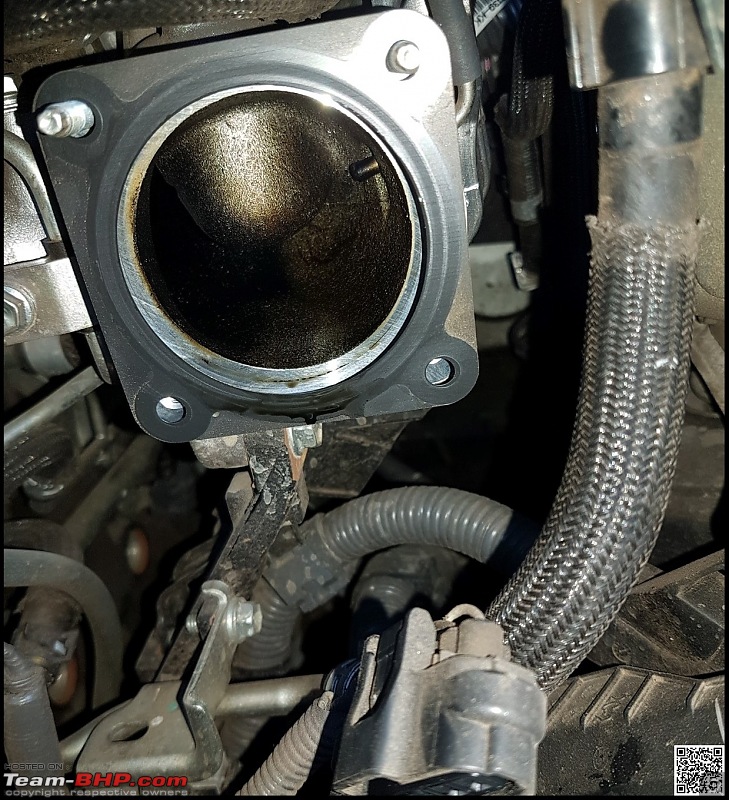 Throttle Plate Delete
Throttle Plate Delete
The screw holding the throttle plate to the spindle was locked as expected. It does not turn and easily strips the head if force is used and your bit is good! So the only option was to drill the screws out. It took me some time as the spring loaded throttle plate would sit fully open in its natural resting position preventing the access to the screws. So I had to with one hand hold the throttle plate closed and with the other hand manage the hand drill and drill the screw out. The throttle spring was pretty stiff in this one, much more stiffer and stronger than one would expect in a Petrol engine.

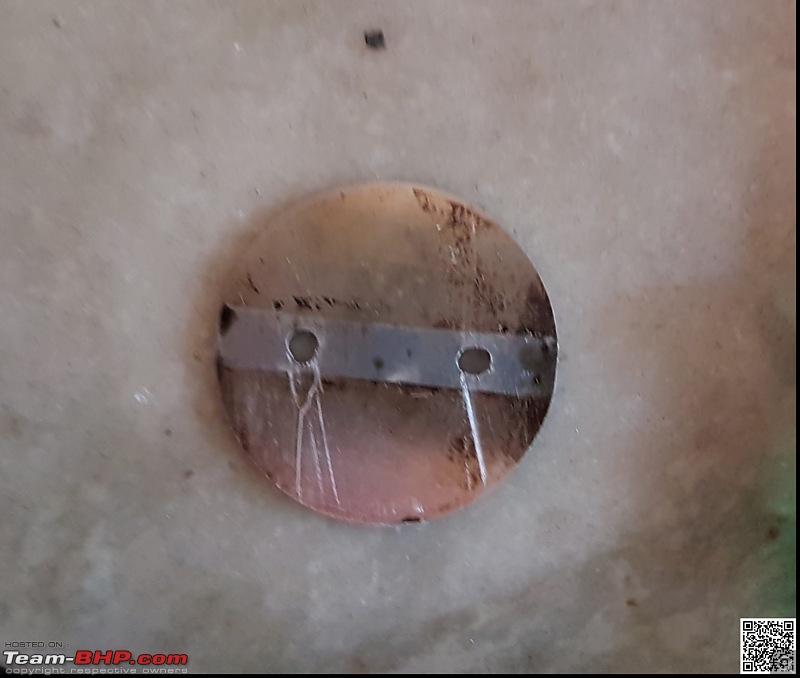
Better leave the spindle there, so as to feed the ECU about its position. Not a pleasant sight loosing that much area to the spindle cross section. HaHaHa!
This is probably the first documented case of throttle plate removal in a GDFTV engine. I have not come across another one as on date.
Verdict
There is improvement in off idle throttle response, now it just got a bit more urgent while accelerating. The difference while noticeable is not huge.
The compressor surge noise which was audible earlier is now almost gone. Letting go off the throttle pedal after accelerating hard ECU decides to partially close the throttle to aid the EGR. ECU does this whenever leg is off the pedal. When the throttle valve close boost has no place to go. This causes surge/stall. With no throttle body to close the boost is consumed by the engine. This is the reason why some highly modified Diesels include a diverter valve/blow off valve in their build, to prevent stall/surge. Anyway I am not going that route.
Swirl Flap
I am just mentioning it here since few have questioned the effectiveness of the throttle plate delete in the presence of swirl flaps which are semi closed during low load low throttle situations.Intake runner has two ports, one has a swirl flap and the other one is open always. So even if the swirl flap is semi closed the boost can enter the cylinder through the other port. So having swirl plates does not nullify the throttle valve plate removal. At high RPM and high load swirl flaps are fully open.
--
PS: This modification is Post Unichip installation.


 (52)
Thanks
(52)
Thanks

 (2)
Thanks
(2)
Thanks

 (17)
Thanks
(17)
Thanks
 (3)
Thanks
(3)
Thanks

 (5)
Thanks
(5)
Thanks
 (1)
Thanks
(1)
Thanks
 (4)
Thanks
(4)
Thanks
 (2)
Thanks
(2)
Thanks
 (2)
Thanks
(2)
Thanks

 (2)
Thanks
(2)
Thanks
 (1)
Thanks
(1)
Thanks

 (2)
Thanks
(2)
Thanks
 (3)
Thanks
(3)
Thanks










